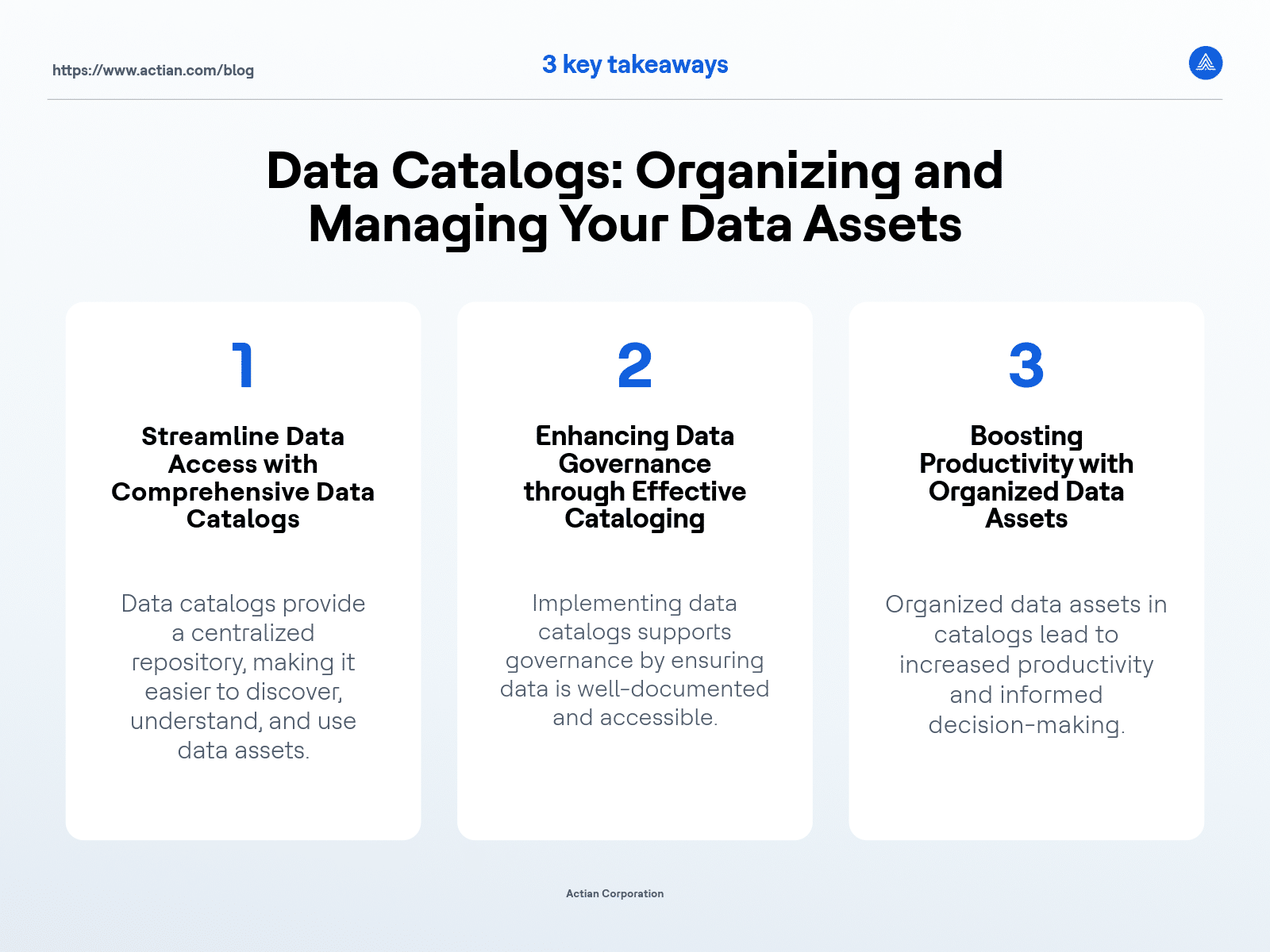What is a Data Catalog?
Data is the backbone for businesses across all industries, but managing and interpreting that data can be difficult without the right tools in place. A data catalog can help you create a clear inventory of your data assets so your team can better access the information they need.
In this article, we’ll explore how data catalogs work, the different types of metadata stored and maintained by catalogs, and how it can benefit your organization.
How a Data Catalog Promotes Data Governance
Having it improves compliance and governance by ensuring all data has a steward, is refreshed regularly, is of high quality and is protected by role-based security mechanisms. Specific policies such as retention periods, business continuity requirements and geographic location can also be documented in the catalog to enforce appropriate governance controls.
What Exactly is a Data Catalog?
A data catalog is a centralized hub that organizes and stores metadata for a business or organization’s data assets. The goal of the catalog is to make finding and accessing data easier throughout the organization. Here are some of the key ways data catalogs can help businesses.
- Implementing a clear data governance system.
- Helping anaylists identify possible problems and trends in the data sets.
- Creating a clear pathway for data stewards to see where data is stored and accessed.
- Simplifying the data search process.
What Kind of Metadata Does a Data Catalog Maintain?
A data catalog can contain metadata that pertains to technical and business aspects. Technical metadata can include creation date, modification date, datatype, length, field names and structural information. Business metadata provides context on where it came from (its lineage), who should use it, and for what purposes.
How a Data Catalog Promotes Data Governance
Having a data catalog improves compliance and governance by ensuring all data has a steward, is refreshed regularly, is of high quality and is protected by role-based security mechanisms. Specific policies such as retention periods, business continuity requirements and geographic location can also be documented in the catalog to enforce appropriate governance controls.
What Applications Benefit From It?
Data analysts, data engineers and data scientists rely on high-quality data sources to ensure the output from their analysis and machine learning models are valid. Regulatory compliance reporting must use trusted data sources or risk failing audits and consequent fines. Business Intelligence (BI) systems can use the data catalog to select data for reporting and visualization. Data warehouses and data lakes need technical information about data sources to create appropriate data integration scripts and to schedule periodic data refreshes.
Benefits of a Data Catalog
The primary benefits include the following:
- Improved data visibility. Without it, users can waste effort duplicating existing data sources.
- Help organizations get the most value from their data assets. The data catalog advertises good data sources and encourages users to focus on higher-quality data.
- Increased confidence in the data through lineage metadata. It helps users make better data-driven decisions knowing where data comes from.
- Make data more accessible to users as formats are documented. Data integration and BI tools can use the format information contained in the catalog to handle fields according to the documented data type. For example, just because a field contains numbers does not mean it is not a character field.
- Foster data quality. Every Chief Data Officer (CDO) is concerned with improving data quality. It can contain quality metrics that can be used to demonstrate improvements in data quality over time.
- Enforce regulatory compliance. Auditors are charged to look for lapses in compliance. The catalog makes audits easier by documenting what controls are in place for each data set subject to regulatory compliance enforcement.
- Reduce unnecessary data duplication. Rogue copies of unmaintained data shared as emailed spreadsheets without metadata about its data providence is a recipe for disaster. It mitigates some of the risks associated with unmanaged data sharing.
- Lower data management costs. Focus the organization on using only the highest quality curated data. It helps to focus the organization on fewer data sources, reducing the overall data administration cost.
- Encourage data stewardship. Every data set should have a person or team associated with it responsible for maintaining its quality and currency. Implementing a data catalog enhances your data stewardship efforts by making it easier for individuals to access, update, and manage the data sets they’re responsible for.
- Assure data governance: Data catalogs can improve your data governance efforts by providing the organization with a centralized source of metadata that calls out poorly governed data sources.
Data Catalog Types
We generally think of the catalog as a resource for a single business. There is an emerging type of open data catalog that benefits multiple businesses and organizations. Examples of this include:
- Financial Industry Regulatory Authority (FINRA) shared a data catalog that stores technical metadata for consumers of their external data sets.
- The World Bank designed a data catalog to make its development data easy to use.
- The UK HMRC (His Majesty’s Revenue and Collections) department has published its Data Catalogue, an inventory of the datasets HMRC holds and processes for public consumption.
The Actian Data Platform
The Actian Data Platform can be used to support multiple data stores that can be registered in a data catalog. For complete data warehouse deployment flexibility, the Actian Data platform can be hosted on-premises or on multiple cloud platforms. It can be used to provide metadata associated with database objects making data easy to find and use.
A Data Catalog Helps Users Find an Organization’s Data Assets by Providing Enriched Metadata
The data catalog enables an organization to guide users to the highest quality and trusted data in the enterprise. It improves data governance, as ungoverned data can be omitted or flagged as a poor-quality source. Data sprawl is a big problem for many organizations as users often create copies of data that they don’t maintain or refresh. The data catalog guides users to well-maintained and trusted data sources. Decisions based on outdated data can lead to bad outcomes. Without it, a business can waste a lot of time and effort looking for needed data, impacting productivity and profitability.
Key Takeaways




